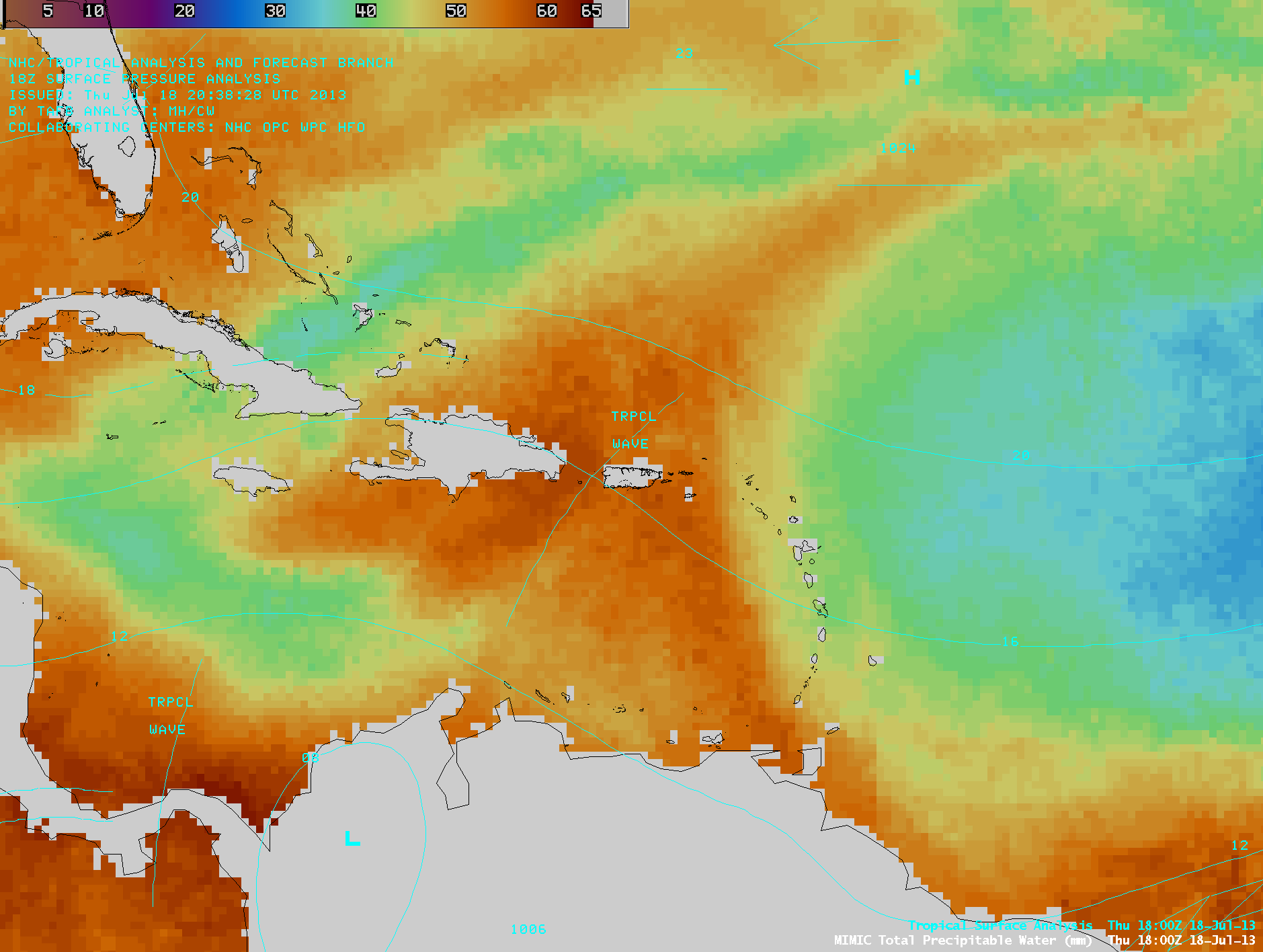
[ Archive ]

 |
ASPB and CIMSS Weekly Report
[ Archive ] |
 |
IN THE PRESS:
ITEMS FOR THE ADMINISTRATOR:
ITEMS FOR THE ASSISTANT ADMINISTRATOR:
ITEMS FOR THE OFFICE DIRECTOR, STAR:
Participation at European Severe Storm Center Test Bed: The
Cooperative Institute for Meteorological Satellite Studies (CIMSS)
participated in evaluations at the European Severe Storm Center (ESSL)
Test Bed from 15-19 July 2013. The activity was supported by EUMETSAT
with the objective of obtaining further feedback from forecasters as the
utility of the CIMSS NearCast system in predicting severe storms over
Europe. The NearCast system has been adapted to use moisture and
temperature profiles in clear skies not only from GOES but also from
EUMETSAT's Scanning Enhanced Visible and InfraRed Imager (SEVIRI), with
the objective of identifying areas where atmospheric environments are
becoming favorable for the formation of convection. The experience
gained in real-time tests using SEVIRI data in the NearCast analyses and
forecasts provides a pre-launch, real data Risk Reduction opportunity
for the Advanced Baseline Imager (ABI) that will be included on GOES-R.
(R. Petersen, CIMSS, 608-263-4030)
Infrared, Microwave, and Lightning Remote Sensing Theory Bootcamp: Paul Menzel, Steve Ackerman, Ralf Bennartz, and Steve Goodman (GOES-R Program Office) conducted a two week long lecture/lab "bootcamp" from 8-19 July 2013, to provide immersion style review of passive and active remote sensing theory from meteorological satellite radiances/optics. The main goal of this activity was to provide overview for GOES-R satellite liaisons stationed at NOAA national centers: Michael Folmer (Ocean Prediction Center/Satellite Applications Branch/Weather Prediction Center, Washington, DC), Chad Gravelle (National Weather Service Proving Ground, Kansas City), Amanda Terborg (Aviation Weather Center, Kansas City), and William Line (Storm Prediction Center/National Severe Storms Laboratory, Norman, OK). Cooperative Institute for Meteorological Satellite Studies (CIMSS) researchers and students also participated in the bootcamp. Subject material covered in lecture and laboratory format included infrared/microwave radiative transfer, electromagnetic spectrum overview, lightning detection and measurement theory, cloud microphysics, Planck's law, microwave precipitation detection, and satellite data assimilation among other topics. For hands-on laboratory exercises, McIDAS-V/Hydra (Man-computer Interactive Data Access System) was used to demonstrate the theoretical concepts with actual satellite observations. The bootcamp was co-offered as a Department of Atmospheric and Oceanic Sciences (AOS) seminar course. (W. Feltz, CIMSS, 608-265-6283, S. Ackerman, CIMSS, P. Menzel, CIMSS; G. S. Wade, E/RA12, 608-263-4743, gary.s.wade@noaa.gov)
ITEMS FOR THE DIVISION CHIEF, CoRP:
Reprocessing GOES Satellite-derived Winds at CIMSS: A project has been undertaken at the Cooperative Institute for Meteorological Satellite Studies (CIMSS) to reprocess the GOES Atmospheric Motion Vectors (AMV) from 1995 to the present (PI: D. Santek-CIMSS, CoI: C. Velden-CIMSS and J. Daniels-NOAA/STAR). The goal is to produce hourly AMVs from the two operational GOES satellites over the last 18 years by December 2013. This will be in time for inclusion in a global reanalysis by the European Centre for Medium-Range Weather Forecasts (ECMWF). To this end, ECMWF hosted a workshop from 9-11 July 2013 which was attended by D. Santek and S. Wanzong of CIMSS and two representatives from the European Organisation for the Exploitation of Meteorological Satellites (EUMETSAT) to discuss the status and schedule of both geostationary and polar AMV reprocessing efforts. (D. Santek, CIMSS, 608-263-7410, C. Velden, CIMSS, 608-262-9168, S. Wanzong, CIMSS, 608-263-1950) (Click image to enlarge)
(Click image to enlarge)VISITORS:
NEXT WEEK:
LOOKING AHEAD:
| Archived Weeklies Page | Submit a report item |